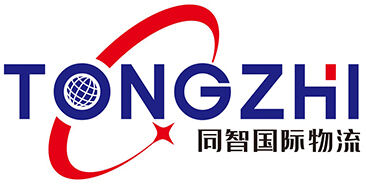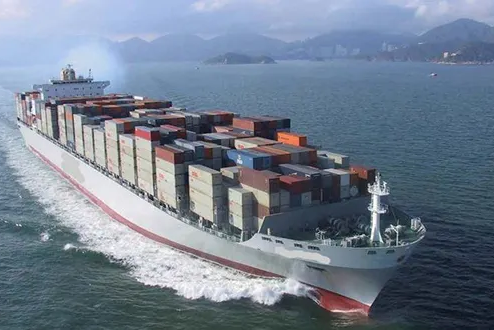การขนส่งด้วยตู้คอนเทนเนอร์เป็นรากฐานของการค้าโลก ช่วยให้การเคลื่อนย้ายสินค้าทั่วโลกมีประสิทธิภาพและปลอดภัย ในขณะที่ความต้องการการค้าระหว่างประเทศเพิ่มขึ้นอย่างต่อเนื่อง ธุรกิจจำเป็นต้องเข้าใจรายละเอียดของการขนส่งตู้คอนเทนเนอร์เพื่อปรับปรุงการดำเนินงานด้านโลจิสติกส์ บทความนี้จะสำรวจแนวปฏิบัติที่ดีที่สุดและปัจจัยสำคัญสำหรับการเพิ่มประสิทธิภาพในการขนส่งตู้คอนเทนเนอร์
การเข้าใจการขนส่งตู้คอนเทนเนอร์
การขนส่งด้วยตู้คอนเทนเนอร์เกี่ยวข้องกับการลำเลียงสินค้าในตู้คอนเทนเนอร์ขนาดใหญ่ที่มีมาตรฐาน ตู้คอนเทนเนอร์เหล่านี้มีหลายขนาด โดยทั่วไปจะเป็นตู้ขนาด 20 ฟุตและ 40 ฟุต การใช้มาตรฐานช่วยให้สามารถโอนย้ายระหว่างเรือ รถบรรทุก และรถไฟได้อย่างราบรื่น ทำให้เป็นวิธีการขนส่งที่หลากหลายและมีประสิทธิภาพ
ประโยชน์สำคัญของการขนส่งด้วยตู้คอนเทนเนอร์
ประสิทธิภาพ: ตู้คอนเทนเนอร์ถูกออกแบบมาเพื่อให้สะดวกต่อการจัดการและการวางซ้อน ซึ่งช่วยเร่งกระบวนการโหลดและ缷สินค้าที่ท่าเรือ ความรวดเร็วนี้แปลเป็นเวลาการเดินทางที่สั้นลงและลดต้นทุน
ความปลอดภัย: สินค้าที่ขนส่งในตู้คอนเทนเนอร์มีแนวโน้มที่จะเสียหายหรือถูกขโมยน้อยกว่า การสร้างตัวตู้คอนเทนเนอร์ที่แข็งแรงช่วยป้องกันจากสภาพอากาศและปัญหาการลักขโมยได้ดี
คุ้มค่า: การขนส่งด้วยตู้คอนเทนเนอร์โดยทั่วไปมีต้นทุนต่ำกว่าวิธีการขนส่งอื่น ๆ โดยเฉพาะอย่างยิ่งสำหรับการขนส่งระหว่างประเทศระยะไกล การรวมการขนส่งหลายรายการเข้าด้วยกันในตู้คอนเทนเนอร์เดียวช่วยลดต้นทุนเพิ่มเติม
ความหลากหลาย: ตู้คอนเทนเนอร์สามารถบรรทุกสินค้าหลากหลายประเภทได้ ตั้งแต่วัตถุดิบ เครื่องจักร สินค้าที่เสื่อมสภาพง่าย ไปจนถึงสินค้าสำเร็จรูป ตู้คอนเทนเนอร์เฉพาะทาง เช่น ตู้เย็น (Reefers) รองรับความต้องการเฉพาะด้าน เช่น การควบคุมอุณหภูมิ
แนวทางปฏิบัติที่ดีที่สุดสำหรับการขนส่งด้วยคอนเทนเนอร์
เลือกประเภทคอนเทนเนอร์ให้เหมาะสม
การเลือกประเภทคอนเทนเนอร์ที่เหมาะสมเป็นสิ่งสำคัญสำหรับการขนส่งสินค้าอย่างปลอดภัยและมีประสิทธิภาพ คอนเทนเนอร์แห้งมาตรฐานเหมาะสำหรับสินค้าส่วนใหญ่ แต่ธุรกิจควรพิจารณาใช้คอนเทนเนอร์เฉพาะทางสำหรับความต้องการเฉพาะ:
คอนเทนเนอร์เย็น (Reefers): สำหรับสินค้าที่เสื่อมสภาพง่ายซึ่งต้องการควบคุมอุณหภูมิ
คอนเทนเนอร์เปิดหลังคา: สำหรับสินค้าขนาดใหญ่ที่ไม่สามารถใส่ในคอนเทนเนอร์มาตรฐานได้
คอนเทนเนอร์แบบแผ่นระนาบ: สำหรับสินค้าหนักและขนาดใหญ่ เช่น เครื่องจักรและยานพาหนะ
เพิ่มประสิทธิภาพการใช้งานคอนเทนเนอร์
การใช้พื้นที่ภายในคอนเทนเนอร์ให้เต็มที่สามารถลดต้นทุนการขนส่งได้อย่างมาก ธุรกิจควร:
แพ็คและวางสินค้าอย่างเหมาะสม: ตรวจสอบให้แน่ใจว่าสินค้าถูกแพ็คไว้อย่างแน่นหนาและมั่นคงเพื่อป้องกันการเคลื่อนที่ระหว่างการขนส่ง
ใช้พาเลทและกระดานรอง: ช่วยให้การจัดการง่ายขึ้นและการใช้พื้นที่อย่างมีประสิทธิภาพ
จัดการการกระจายน้ำหนัก: กระจายน้ำหนักอย่างสม่ำเสมอเพื่อรักษาความมั่นคงและป้องกันความเสียหาย
นำระบบติดตามขั้นสูงมาใช้
การติดตามและตรวจสอบการจัดส่งแบบเรียลไทม์มอบข้อมูลเชิงลึกที่มีคุณค่าและเพิ่มความโปร่งใสตลอดกระบวนการจัดส่ง ระบบติดตามขั้นสูงเสนอ:
การอัปเดตตำแหน่งแบบเรียลไทม์: แจ้งให้ธุรกิจทราบเกี่ยวกับตำแหน่งและความเป็นอยู่ของพัสดุของพวกเขา
การตรวจสอบสภาพ: รับประกันว่าสินค้าที่ไวต่ออุณหภูมิอยู่ในช่วงที่กำหนด
การวิเคราะห์เชิงคาดการณ์: คาดการณ์ความล่าช้าที่อาจเกิดขึ้นและปรับปรุงเส้นทางเพื่อการจัดส่งที่รวดเร็วยิ่งขึ้น
รับรองว่าปฏิบัติตามกฎระเบียบ
การปฏิบัติตามกฎระเบียบการขนส่งระหว่างประเทศเป็นสิ่งสำคัญเพื่อหลีกเลี่ยงความล่าช้าและบทลงโทษ ธุรกิจควร:
ติดตามข้อมูลเกี่ยวกับกฎระเบียบการค้า: ให้ทันสมัยกับกฎหมายการนำเข้าส่งออกและการกำหนดข้อกำหนดศุลกากรสำหรับแต่ละจุดหมายปลายทาง
เตรียมเอกสารที่ถูกต้อง: ตรวจสอบให้แน่ใจว่าเอกสารทั้งหมด เช่น เอกสารรับรองการขนส่ง ใบรับรองแหล่งที่มา และคำชี้แจงศุลกากร ได้รับการกรอกและส่งตรงเวลา
ทำงานร่วมกับนายหน้าศุลกากรที่มีประสบการณ์: อำนวยความสะดวกในการผ่านพิธีการศุลกากรและลดความเสี่ยงของปัญหาด้านการปฏิบัติตามกฎระเบียบ
ใช้เทคโนโลยีเพื่อเพิ่มประสิทธิภาพ
เทคโนโลยีมีบทบาทสำคัญในกระบวนการปรับปรุงการดำเนินงานขนส่งตู้สินค้า ธุรกิจควรใช้:
ซอฟต์แวร์จัดการการขนส่ง: ทำให้กระบวนการจอง เอกสาร และการติดตามเป็นไปอย่างราบรื่น
ระบบการจัดการสินค้าอัตโนมัติ: ช่วยเร่งกระบวนการโหลดและ缷สินค้าที่ท่าเรือ
เทคโนโลยีบล็อกเชน: เพิ่มความโปร่งใสและความปลอดภัยในห่วงโซ่อุปทานโดยการให้มีบันทึกการทำธุรกรรมและการเคลื่อนไหวที่ไม่สามารถเปลี่ยนแปลงได้
ปัจจัยสำคัญสำหรับการขนส่งตู้สินค้า
การจัดการต้นทุน
ค่าใช้จ่ายในการขนส่งสามารถส่งผลกระทบอย่างมากต่อผลกำไรของธุรกิจ กลยุทธ์สำคัญในการจัดการค่าใช้จ่ายประกอบด้วย:
การรวมการจัดส่ง: รวมการจัดส่งหลายครั้งเข้าด้วยกันในคอนเทนเนอร์เดียวเพื่อให้ได้ประโยชน์จากขนาดเศรษฐกิจ
การเจรจาสัญญา: รักษาอัตราและเงื่อนไขที่ดีกับบริษัทขนส่งและตัวแทนจัดส่งสินค้าทางเรือ
การปรับปรุงเส้นทาง: เลือกเส้นทางที่มีประสิทธิภาพและคุ้มค่าที่สุดเพื่อลดเวลาในการขนส่งและลดการใช้เชื้อเพลิง
การจัดการความเสี่ยง
การจัดการความเสี่ยงที่เกี่ยวข้องกับการขนส่งด้วยคอนเทนเนอร์เป็นสิ่งสำคัญเพื่อให้มั่นใจว่าสินค้าจะถึงปลายทางอย่างปลอดภัยและตรงเวลา พิจารณาดังนี้:
การประกันภัย: ป้องกันความเสียหายที่อาจเกิดขึ้น
จากความเสียหาย การโจรกรรม หรือการล่าช้า
การวางแผนสำรอง: พัฒนาแผนการเพื่อจัดการกับการหยุดชะงักที่ไม่คาดคิด เช่น การประท้วงที่ท่าเรือหรือภัยธรรมชาติ
การตรวจสอบประจำ: ดำเนินการตรวจสอบกระบวนการและการทำงานร่วมกับพันธมิตรในการขนส่งเพื่อระบุและลดความเสี่ยง
การปฏิบัติงานอย่างยั่งยืน
ความยั่งยืนกำลังกลายเป็นสิ่งสำคัญมากขึ้นในโลจิสติกส์ระดับโลก ธุรกิจสามารถนำแนวทางที่เป็นมิตรต่อสิ่งแวดล้อมมาใช้ เช่น:
การใช้เรือที่ประหยัดเชื้อเพลิง: เลือกบริษัทขนส่งที่ใช้เรือรุ่นใหม่ที่ประหยัดเชื้อเพลิงเพื่อลดการปล่อยคาร์บอน
การนำวิธีบรรจุภัณฑ์สีเขียวมาใช้: ใช้วัสดุบรรจุภัณฑ์ที่สามารถรีไซเคิลและย่อยสลายได้ทางชีวภาพเพื่อลดผลกระทบต่อสิ่งแวดล้อม
การชดเชยการปล่อยคาร์บอน: เข้าร่วมโปรแกรมชดเชยคาร์บอนเพื่อทำให้การปล่อยมลพิษจากการขนส่งเป็นศูนย์
สรุป
การขนส่งด้วยตู้คอนเทนเนอร์เป็นองค์ประกอบสำคัญของการค้าระหว่างประเทศ โดยมอบประสิทธิภาพ ความปลอดภัย และความคุ้มค่า การใช้แนวทางปฏิบัติที่ดีที่สุด เช่น การเลือกประเภทตู้คอนเทนเนอร์ที่เหมาะสม การเพิ่มประสิทธิภาพการใช้งานตู้คอนเทนเนอร์ การใช้ระบบติดตามขั้นสูง การปฏิบัติตามกฎระเบียบ และการยอมรับเทคโนโลยี จะช่วยให้ธุรกิจได้รับประโยชน์สูงสุดจากบริการขนส่งด้วยคอนเทนเนอร์ นอกจากนี้ การจัดการต้นทุน การลดความเสี่ยง และการนำแนวทางที่ยั่งยืนมาใช้ยังเป็นสิ่งสำคัญสำหรับการรักษาความได้เปรียบในการแข่งขันในตลาดโลก







































